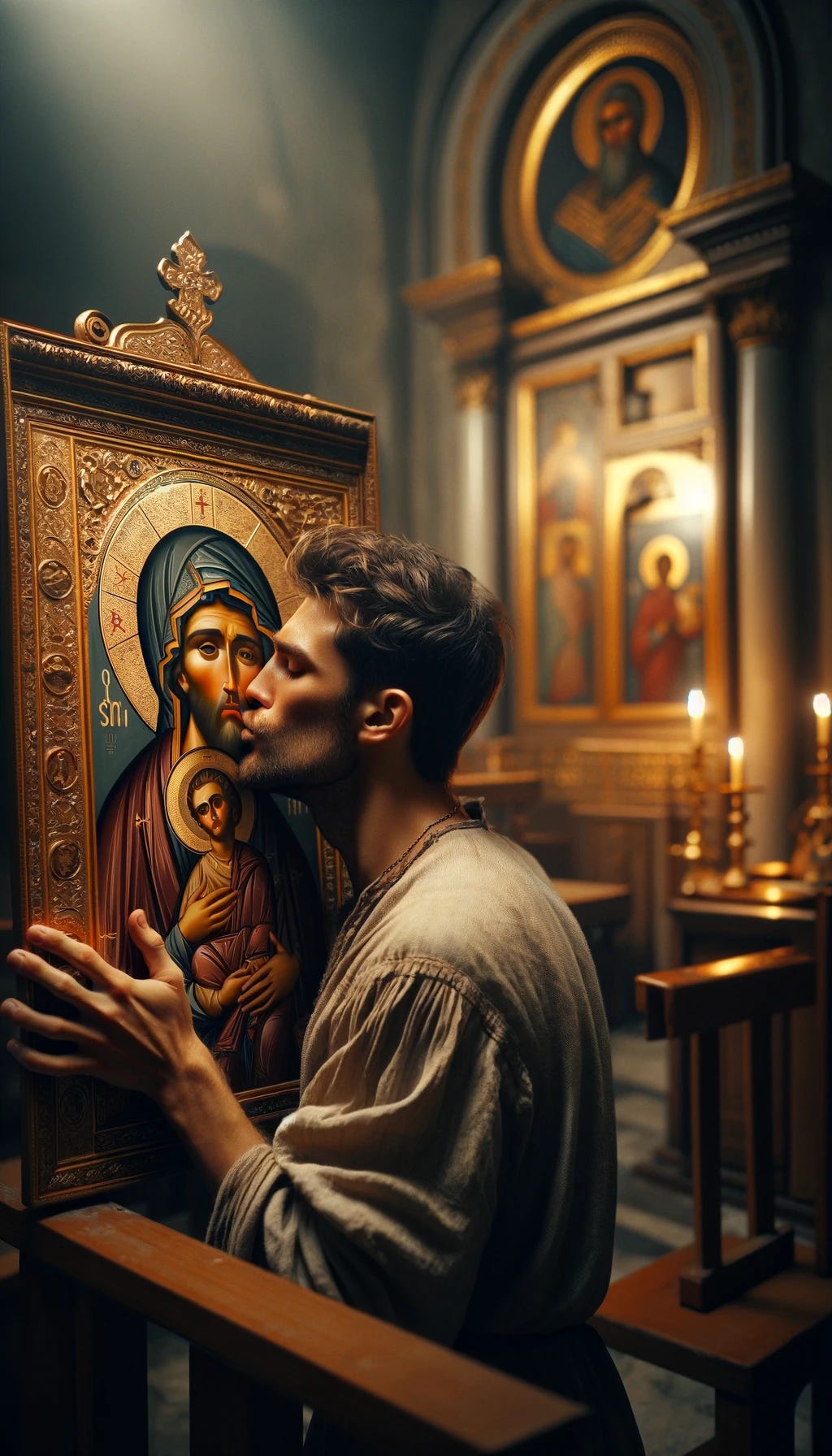Do Orthodox Worship Graven Images?
Does Icon veneration violate the second commandment?
After watching me pray before my Orthodox Icons and kissing them at the end of my prayer rule, my wife asked me how I reconciled that practice against the second of the ten commandments:
You shall not make for yourself a graven image or any likeness of anything that is in heaven above, or that is on the earth beneath, or that is in the water under the earth;
This is, in fact, a very common question, and there is a good reason why someone from a protestant or LDS background might feel this way.
Where does this attitude come from? Iconoclasm and the Reformation
The Protestant reformers of the sixteenth century had a very distinct understanding of the Second Commandment, which differed significantly from the Catholic perspective. It’s important to remember that the Reformation was a reaction against what the reformers saw as the excesses of the Catholic church. As a result, they stripped almost everything out of their sects that was reminiscent of Catholicism.
John Calvin, a hugely influential reformer, was one of the most vocal critics against the use of images in worship. He argued that any image intended to represent God or Christ was inherently misleading and idolatrous. In his Institutes of the Christian Religion, he emphasized that God cannot be represented by physical objects without degrading His glory and divinity. In regions influenced by Calvinist teachings, Iconoclastic1 Fury2 saw churches stripped of statues, paintings, and other religious images deemed idolatrous. This attitude permeated the protestant mind and was very prevalent in the cultural milieu that Joseph Smith grew up in. His mother, Lucy Mack Smith, was also baptized Presbyterian - a Calvinist denomination.
As a result, early Mormonism, much like Calvinism, rejected the use of traditional Christian icons and images in worship. This rejection is consistent with the broader Protestant iconoclastic tradition and can be seen in the sparsity of LDS buildings today. Visit one, and you will note that religious imagery is very limited, and the buildings are, well, sparse.3
Ok, now that we know how we got to this LDS perspective…
Let’s get some context… and more context….
Much of this section was taken from Fr. Anthony Mourad’s excellent video on the topic.
First, let’s go back to the beginning…. In Genesis 1:26 we read
“God said let us make man in our own image, after our own likeness.”
When translated from Hebrew into Greek, the word used was Eikona, from which we get the word Icon. Eikona means Image; ergo, an Icon is just an Image.
This practice of creating Images or Icons begins with God himself—creating us in his own Image. Jesus Christ was also called the “image of the Father” - Colossians 1:15. Thus, it seems strange that God would forbid us to create any images when he himself has not only done so but commanded others to do likewise.
Keep reading with a 7-day free trial
Subscribe to Latter-Day Saint to Orthodox to keep reading this post and get 7 days of free access to the full post archives.




